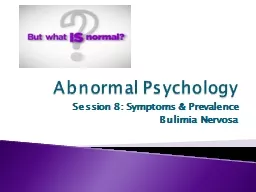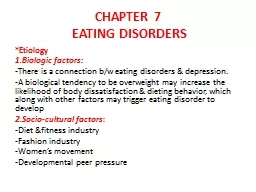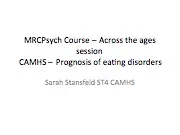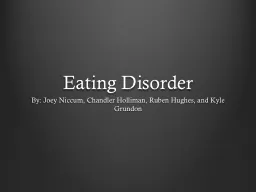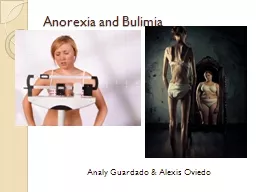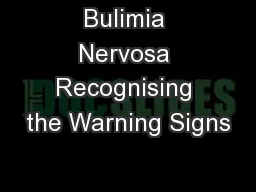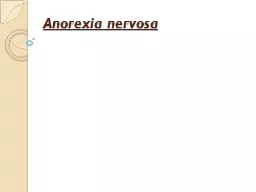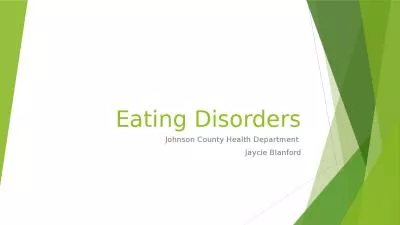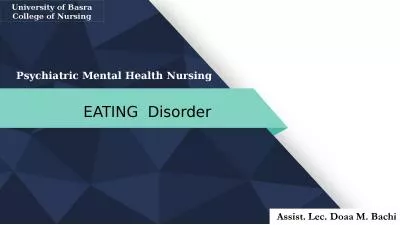PPT-Bulimia Nervosa
Author : conchita-marotz | Published Date : 2016-02-25
By Gianna Gandy and Emily Daley Introduction Hello We are Emily and Gianna w ho are from the Illinois State Board of Education We work in the department of Physical
Presentation Embed Code
Download Presentation
Download Presentation The PPT/PDF document "Bulimia Nervosa" is the property of its rightful owner. Permission is granted to download and print the materials on this website for personal, non-commercial use only, and to display it on your personal computer provided you do not modify the materials and that you retain all copyright notices contained in the materials. By downloading content from our website, you accept the terms of this agreement.
Bulimia Nervosa: Transcript
Download Rules Of Document
"Bulimia Nervosa"The content belongs to its owner. You may download and print it for personal use, without modification, and keep all copyright notices. By downloading, you agree to these terms.
Related Documents


